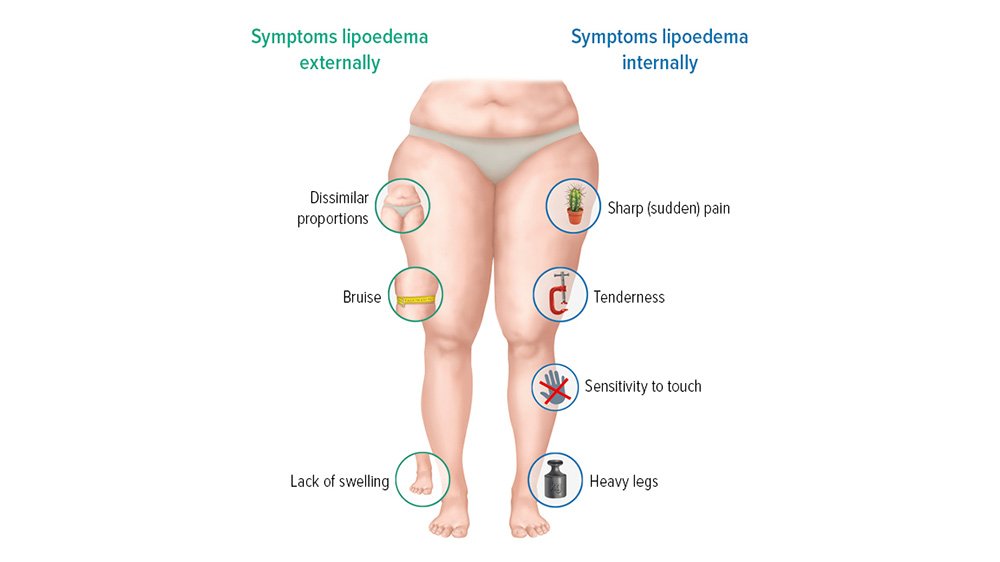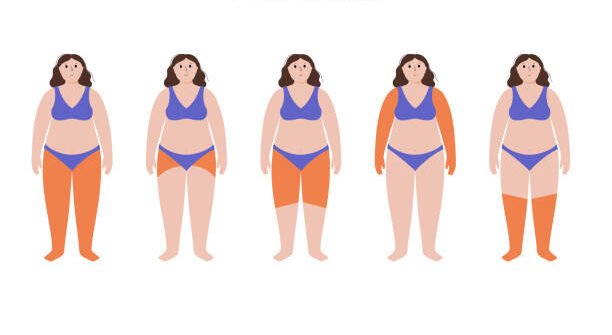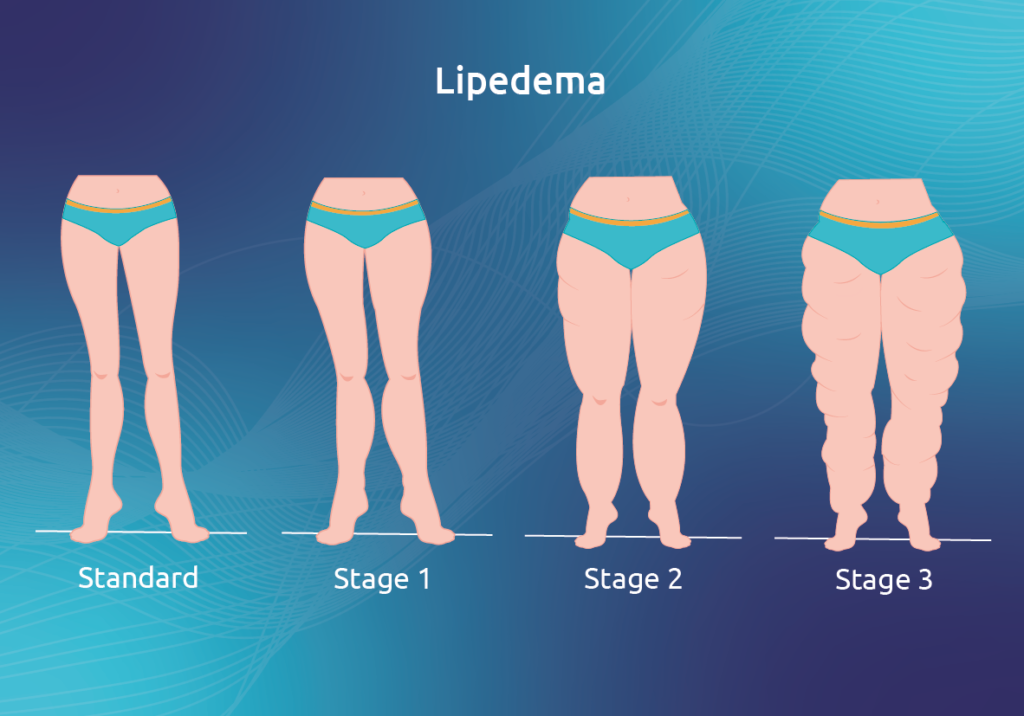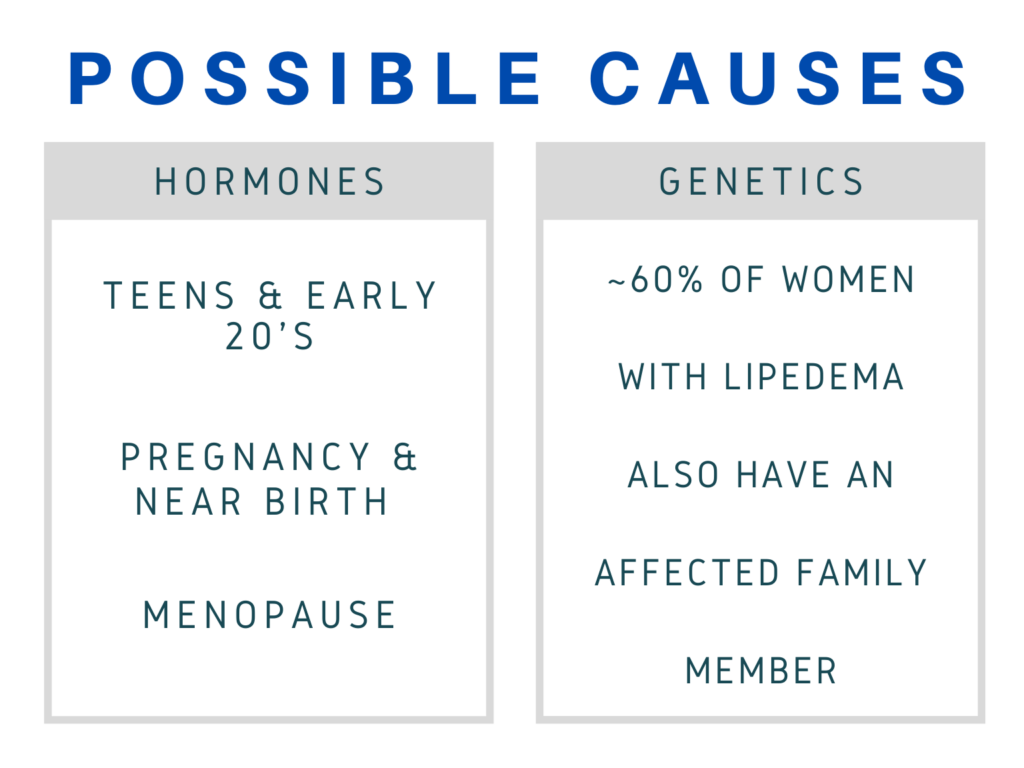What is Lipedema?
Lipedema is a rather common, yet often painful disorder that affects the accumulation of fat cells in the body. While fat cells, otherwise referred to as adipose tissue, are an important feature in providing the human body with both cushioning and insulation. Lipedema causes the excessive congregation of these cells, particularly around the legs. Sometimes, spreading occurs in the torso, and in many cases, excessive clustering of fat cells is noticed in the arms as well. It’s estimated that arms are affected in nearly 80% of Lipedema cases reported.

Who is Affected by Lipedema?
Women tend to be the vast majority of individuals affected by Lipedema. It is estimated that 11% of women worldwide suffer from this disorder. Because Lipedema is highly resistant to both diet and exercise regimens, it’s not uncommon for women suffering from Lipedema to be misdiagnosed with either traditional obesity or lymphedema.

Lipedema Symptoms:
Lipedema may be found in women of all shapes, sizes, ages and ethnicities. Lipedema presents with a number of symptoms – the below is not an exhaustive list, and not all patients will display all symptoms.
- Disproportionate bilateral fat growth in the legs, buttocks, thighs, and/or arms
- Appearance of lumpy, nodular fat in other areas of body, including abdomen, groin, breasts and scalp
- Waist may appear smaller in proportion to lipoedema affected areas of the body
- Distinct ‘bracelet’ or ‘cuffing’ effect at the wrist and ankle may be present, as feet and hands usually not affected
- Easily bruised with minimal trauma
- Sensation of heaviness, achiness or discomfort in affected areas
- Affected areas are sensitive to touch and often feel cold
- Soft, wobbly fat that can have a cellulite or ‘mattress’ like appearance
- Increased discomfort in hot weather
- Diet and exercise has minimal impact on affected areas
- Reduced hair growth on affected areas
Stages of Lipedema:
Lipedema appears in a series of three stages:
Stage 1 presents in patients as skin that is flat stretched over pearl-sized nodules that show up within a layer of fat showing increased cell size. Stage 2 presents as indented skin that’s covering a layer of fat cells presenting as pearl to apple-sized masses.
Stage 3 presents as pearl-sized nodules in combination with excessively large fat masses causing lobules along the legs, hips, and thighs and frequently extending to the torso or upper arms.


Potential Lipedema Cause:
While there is not confirmed reasoning behind the development of Lipoedema, many medical experts link the condition to significant hormonal changes that can occur in an individual’s body. This belief very much revolves around the fact that Lipedema tends to appear most often in women during pregnancy, near childbirth, and throughout menopause.
Genetics likely plays a role in the occurrence of lipedema. Studies have shown up to 60% of individuals with lipedema have a family member who also shows signs of the disease. Currently, there is no specific gene identified with this disease.
Do You Have any Query?
Frequently Asked Questiones
Lipedema is a chronic condition where fat accumulates disproportionately, usually in the legs, hips, and sometimes arms, causing pain and swelling
Common symptoms include excess fat buildup in the lower body, pain, tenderness, and easy bruising. The upper body usually remains unaffected.
Lipedema is not caused by excess calorie intake. It is a fat disorder, where fat builds up in specific areas, and it doesn’t respond to typical diet and exercise.
Treatments include conservative methods such as compression garments, manual lymphatic drainage, and physical therapy, as well as surgical options like liposuction.

